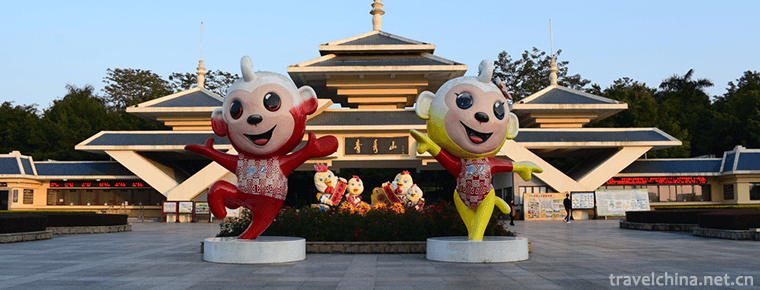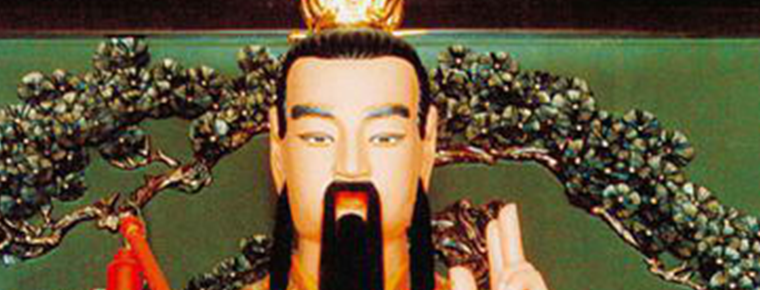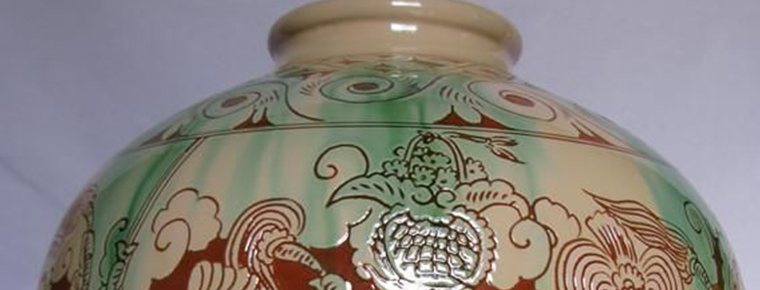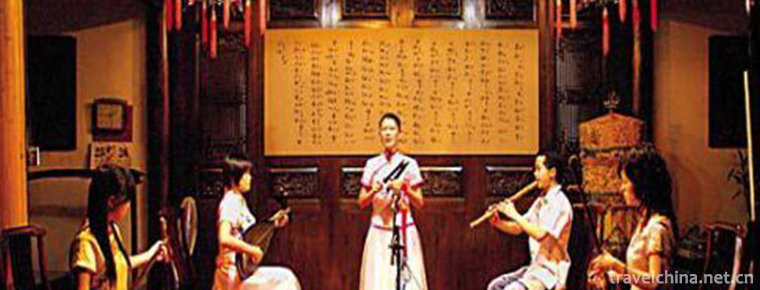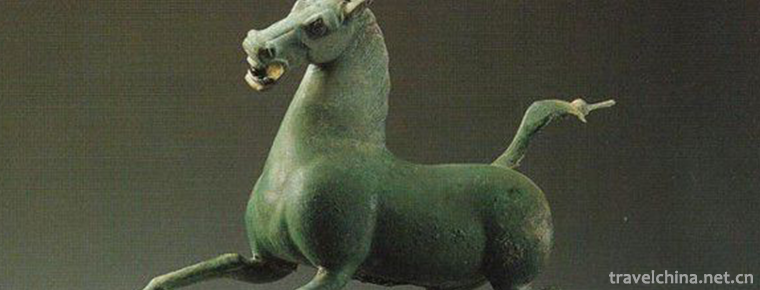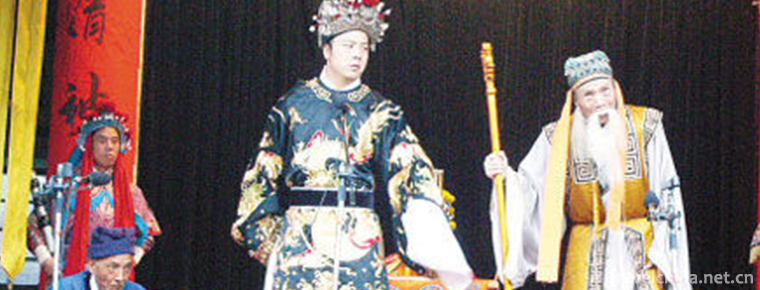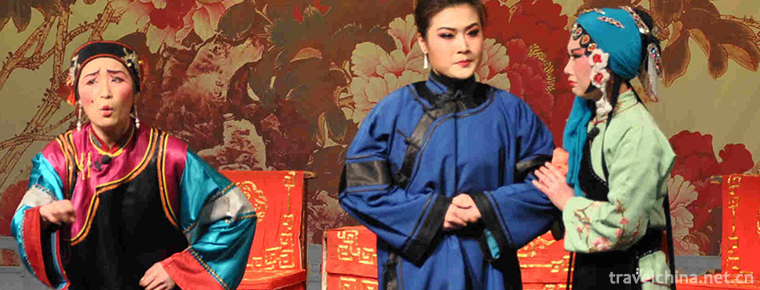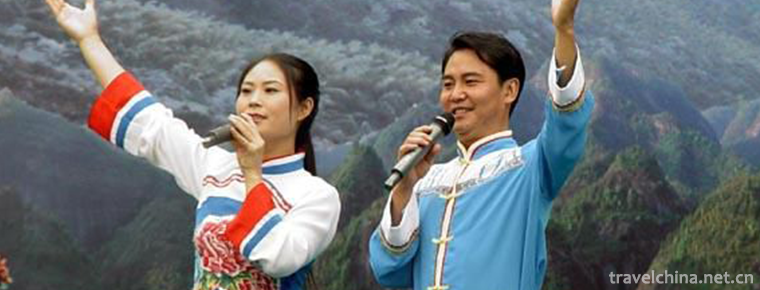Venus Inkstone Making Skills
Venus Inkstone Making Skills
Venus inkstone making technology, the local traditional handmade inkstone making technology in Xingzi County, Jiangxi Province, is one of the national intangible cultural heritage.
Venus inkstone production technology has a long history. In Mifu's Inkstone History of the Northern Song Dynasty, there are records of Xingzi Bluestone Inkstone. In the Ming Dynasty, Venus inkstone production was once in decline, and in the mid-Qing Dynasty it was gradually in the ascendant. During the period of the Republic of China, there were more than 100 inkstone workshops in Xingzi County.
On May 20, 2006, Venus inkstone production technology was approved by the State Council of the People's Republic of China and listed in the first batch of national intangible cultural heritage list, project number: _-76.
historical origin
Venus inkstone, also known as Venus Song inkstone. According to folklore, the first inkstone came from Tao Yuanming, a poet of the Eastern Jin Dynasty. Aixin Jueluo Pujie wrote a poem inscribing it: "In the past, with Dewen as jade, Inkstone as precious as Venus for a long time, gentle and strong as ink can be traced back to the origin of the five willows." Tongzhi of Qing Dynasty "Xingzi County Records Property" contains: "Song Shiyan, there are Venus really, out of the Badu stone cave debris, there are excavators from the earth." In Mifu's Inkstone History of the Northern Song Dynasty, "Blue Stone Inkstone of Lushan Mountain is roughly the same as that of Tanzhou Valley Mountain." "Blue and grained, such as silk curtain, button sound, ink fast, ink bright, and Venus, caress the fine Run." "Lushan Zhi Property" of the Republic of China records: "Blue stone produces Badu Camel Ridge, Sidu Jishan, Camel Ridge Stone is particularly ancient, Chao is inkstone, known as Venus Song Stone." Badu and Sidu are Xingzi Hengtang Town and Hualin Township. From this we can see that Xingzi Jinxing Inkstone was in the peak of production in the Northern Song Dynasty. There are several ancient stone inkstones in Xingzi County Cultural Relics Management Institute, such as "Fengzi Inkstone" (Song Dynasty), "Ji Shaped Inkstone" (Song Dynasty) and "Heteromorphic Lotus Leaf Inkstone" (Qianlong Dynasty of Qing Dynasty). Their modeling techniques have already been of good taste in Song Dynasty.
By the Ming Dynasty, the production of Jinxing inkstone was once in decline. In the mid-Qing Dynasty, the inkstone industry of Jinxing was gradually booming. There were even shops specializing in inkstone platform in Xingzi City, whose street was called "Inkstone Street". During the Republic of China, there were more than 100 inkstone-making workshops in Huali, the street length, and county territory. It was recorded in the Nineteen Years Travel Notes of Mianyun in the Republic of China that "Jinxing inkstone in many stores is a special product of Nankang." According to the article Wei Ruihe, a star inkstone merchant in Jiujiang Modern Famous Merchants, Venus inkstones produced by local artists participated in international exhibitions twice.
In 1915, Wei Rui's Rhinoceros Watching the Moon inkstone was sent to the United States by the Ministry of Agriculture and Commerce to participate in the Expo, which is also recorded in Wei Rui's epitaph, thus the production technology of Venus inkstone reached a new level.
In 1947, the government of Xingzi County instructed Wen Yun of Hengtang Central National School: "Uruguay of South America is scheduled to hold an international exhibition of children's arts and crafts in November this year, requiring our country to participate in... It is hoped that the school will collect the splendid Venus Song Shiyan and send it to the government as soon as possible according to the limitation. As a result, Venus Inkstone began to enter the international market.
Process characteristics
Raw material characteristics
Venus inkstone is exquisite in material selection and production. Its raw material, Jinxing Songshi, is produced in Tuoling Mountain. The Records of Lushan and Property of the Republic of China recorded that "Qingshi produces Badu Tuoling, Sidu Jishan, and Tuoling Stone is especially old. It is called Inkstone, and it is called Jinxing Songshi." Venus Songshi is tough, delicate, warm and clear, meticulous in texture, breathing into clouds, and its stars are dotted with brilliant spots, with thousands of shapes. Because the stone contains iron, it is golden after oxidation. According to its pattern shape, intensity and size, there are Venus, golden halo, golden circle, golden ripple, water polo, eyebrow ripple, ice ripple, cat's eye, golden thread, silver line, wood ripple, fish ripple and so on. As far as Venus is concerned, there are also eyebrow Venus, fish Venus, water ripple Venus, and very rare golden tortoise eye, Longfeng eye, cormorant eye, etc. The decoration of Venus Songshi reflects the natural beauty and the beauty of change of materials, which has great ornamental value. The Venus inkstone produced by this method has the advantages of fast ink-making, non-drying water storage, long-term grinding and no powder, and "bright ink". Venus Songshi is only occasionally available, and its stone is rare. Therefore, mining is complicated. It is necessary to excavate hard and uniform layered bluestone, find bluestone layer containing Venus (iron sulfide), and transport it down the mountain by manpower after mining.
Modeling
Venus inkstone shapes vary from material to material, forming naturally. Inkstone platform has long, square, round, special and natural shape. Special-shaped inkstones such as Phoenix inkstone, skip-shaped inkstone, tile inkstone, fan inkstone, skirt inkstone, lotus leaf inkstone, etc.
Pattern selection
Traditional inkstone patterns have very regional characteristics. They are based on local products, such as mangosteen, bamboo shoots, tree roots, green fish, stone frogs, etc. They are based on local scenery, such as Lushan scenery, Poyang Lake scenery, etc. They are based on legends, such as Xizhi and geese, Taoyuan Ming and wine, Li Bai and poetry, Zhu Xi and Bailu, etc. Patterns include flowers, grass, birds, beasts, single dragon water, double dragon beads, double phoenix sunrise, dragon and Phoenix Chengxiang, Pohu scenery, Lushan scenery, legends of characters, etc.
Inheritance and protection
Inheritance value
(1) Historical value
The excellent culture of the Chinese nation, a very important way is the writing and inheritance of words. Pen, ink, paper and inkstone play an irreplaceable role and a lofty position in cultural inheritance. Among the "four treasures of the study", inkstone is most closely related to literati because of its durability and indispensability. Su Yi-jian of the Song Dynasty said in the Four Genealogy of the Study: "Four treasure inkstones are the first, ink and paper can be obtained at any time, and can be used for life, only inkstones." In the long history of thousands of years, inkstone has always been a writing tool that literati can not be separated from each other.
The historical value of Jinxing Song Inkstone also lies in that the birthplace of Jinxing Inkstone is the location of Bailu Academy, one of China's four major academies. Bailu Academy has been an important place for teaching and educating people since its birth in Tang Dynasty and until the end of Qing Dynasty. Venus Inkstone once provided ideal wings for countless scholars and scholars, and continuously explored the road of governing the country and placing the world in peace.
(2) Cultural Value
Xingzi Venus Inkstone carries the excellent culture and art of the Chinese nation. As far as Xingzi Venus Inkstone itself is concerned, its beautiful shape and vivid sculpture are also a kind of culture and art. The shape of Xingzi Venus Inkstone comes from the customs of the times and from the interests and hobbies of numerous literati gathered in Lushan Mountain. The history of Xingzi Song Inkstone is a long river of culture and art. The traditional pattern carved on Xingzi Venus Inkstone is a symbol of national psychological identity and cultural identity.
The sculpture of Xingzi Venus Inkstone comes from the hard work of folk artists, which reflects their simple thoughts, feelings and warm aesthetic experience. The handicraft handicraft handicraft handicraft inherited from generation to generation melts inkstone production into the people's life, into people's prayers and hopes, and reflects the people's yearning for a better life and their pursuit of a better life.
From the end of Qing Dynasty to the Republic of China, Xingzi Jinxing Inkstone went abroad for many times to participate in exhibitions. The western world obtained the real and concrete feeling and recognition of Chinese excellent culture from Xingzi Jinxing Inkstone. It has played a unique role in communicating Chinese and Western cultures.
(3) Economic value
Xingzi Jinxing Inkstone Manufacturing is an industry. The establishment of Jinxing Inkstone status in Song Dynasty promoted the development of handicraft industry in Jiangxi. The prosperity of Jinxing Inkstone in Qing Dynasty led to the economic growth of agriculture and handicraft industry in Xingzi County. The rise of Wei Ruihe and a large number of inkstone handicraftsmen has changed the industrial structure of Xingzi County. Attaching importance to handicraft production and non-agricultural economic development has not only impacted the self-sufficient feudal economy, but also trained a large number of economically minded talents.
Inheritance status
Because of the excessive exploitation of Venus stone, the uneven quality of inkstone products, and the negligence of practitioners in technology transmission, the reputation of Venus inkstone has been damaged, and the inheritance of its production skills has also been affected, which urgently needs the support and protection of relevant parties.
Inheriting characters
Chen Maolin, male, was born in April 1946. On November 17, 2008, Chen Maolin was selected as the representative successor of the first provincial intangible cultural heritage projects in Jiangxi Province and declared in Xingzi County, Jiangxi Province. Project name: Venus inkstone making skills.
Cao Chunshui, male, was born in December 1954. On November 17, 2008, Cao Chunshui was selected as the representative successor of the first provincial intangible cultural heritage projects in Jiangxi Province and declared by Xingzi County, Jiangxi Province. Project name: Venus inkstone making skills.
protective measures
In 2005, the Xingzi County Economic and Trade Commission organized the establishment of the "Xingzi County Arts and Crafts Industry Association". The Association regards technical specifications, technological exchanges, industry self-discipline, strengthening the protection and development of Xingzi Jinxing Song inkstone production technology as its purpose, and vigorously protects Jinxing Song inkstone, a traditional craft with a long history and development prospects.
In 2012, Xingzi Jinxing Inkstone was listed as "Four Treasures of Chinese Jiangxi Study" brand to focus on building. Xingzi County attaches great importance to the production technology of Jinxing Inkstone. It is working out the development plan of Jinxing Inkstone Industry. It will further increase the policy support for Jinxing Inkstone Industry, unify brand, package and formulate market strategy, strive to make Xingzi Inkstone brand, and make Xingzi Jinxing Inkstone become a brilliant film of Jiangxi cultural tourism and an important symbol of cultural prosperity.
social influence
Important exhibition
In 2007, the 3rd Shenzhen International Cultural Exposition was held in Shenzhen, in which the Venus inkstone production skills were displayed.
In 2014, Venus Inkstone Works "He He He Fufu", "He He He He Longevity" and "Everyday Ruyi Inkstone" were selected to participate in the first traditional handicraft master art exhibition in Jiangxi Province.
Honorary commendation
In 1984, "Lushan Three Gorges Bridge" won the second prize in the National Tourism Products Fair.
In 1985, the Venus Inkstone "Wenfang Liangzuo", designed and produced by Cao Chunshui, won the second prize for creation and design of the Hundred Flowers Award for Chinese arts and crafts.
In 1986, Cao Chunshui's "Shenning" Jinxing Inkstone won the second prize of Excellent Creation and Design of the Hundred Flowers Award for Chinese Arts and Crafts. In September of the same year, Chen Maolin's "Nine Turtles and Lotus Leaves" Jinxing Inkstone won the first prize of Excellent Creation and Design of the Hundred Flowers Award for Chinese Arts and Crafts.
In 1987, the Jinxing Inkstone Tourist Series won the first prize of excellent tourist souvenirs in the National Tourist Products Domestic Handicraft Fair.
In 1990, Venus Inkstone Works won the Silver Prize at the First Light Industry Exposition
In 2012, Cao Chunshui's inkstone of "adding flowers to the brocade" won the silver prize of the Hundred Flowers Award of Chinese Arts and Crafts; In the same year, the "Phoenix Peony" inkstone of Cao Chunshui's creation and design won the bronze prize of "Chinese Arts and Crafts Cultural Creativity Award" at the Shenzhen International Cultural Industry Fair, China.
In 2013, Cao Chunshui's Inkstone "Tapping Snow and Searching Mei" won the Silver Prize for Creative Arts and Crafts Culture in China.
In 2014, Cao Chunshui's design and production of "Jiangnan Famous Building Inkstone" won the bronze prize of Chinese Arts and Crafts Hundred Flowers Award, and "Hehe Longevity Inkstone" won the excellent prize of Chinese Arts and Crafts Hundred Flowers Award. In the same year, Cao Chunshui won the bronze prize for "Every day is as good as you like" at the Shenzhen International Cultural Industry Fair in China; In the same year, Cao Chunshui won the silver prize in the third evaluation of the Azalea Award for Arts and Crafts in Jiangxi Province; In the same year, Cao Chunshui's "Niu Inkstone" and "Longfeng Xiangxiang Inkstone" were collected by Jiangxi Arts and Crafts Museum. 。
In 2015, Cao Chunshui's "Golden Gourd Inkstone" won the bronze prize at the Shenzhen International Cultural Industry Expo in China; In the same year, Cao Chunshui's "Liuhai Opera Golden Cicada Inkstone" won the bronze prize of the Hundred Flowers Award of Chinese Arts and Crafts; In the same year, Cao Chunshui's "Autumn Interest" Golden Star Inkstone won the Golden Prize of the China-ASEAN Expo Culture Exhibition; In the same year, Xingzi won the Go Venus Baoyanzhai won the Golden Prize of Arts and Crafts at the China-ASEAN Expo Cultural Exhibition.


-
Yangma Island Scenic Area
National AAAA-level tourist attractions, Shandong Province "Top Ten Tourist Scenic Spots", 2008 "Tourists'Favorite Charm Scenic Spots". Located 9 kilometers north of Ninghai Town, .
Views: 142 Time 2018-12-26 -
Qingxiushan Mountain
Qingxiushan Scenic Area is a national AAAAA scenic spot in Nanning. Qingxiu Mountain is a key scenic spot in Nanning. In addition to protecting and restoring the original historic sites.
Views: 223 Time 2019-02-07 -
The legend of Huang Daxian in Huangchuping
Huang Chuping's legend is one of the local folklores in Jinhua, Zhejiang Province. It originated in the Eastern Jin Dynasty. The earliest written record was in The Biography.
Views: 70 Time 2019-05-04 -
Firing Techniques of Jieshou Coloured Pottery
The firing technique of Jieshou colored pottery, the local traditional handicraft technique of Jieshou City, Anhui Province, is one of the national intangible cultural heritages..
Views: 105 Time 2019-05-06 -
opera sung in southern tunes
Southern Opera is the earliest mature type of drama in the history of Chinese opera. From the end of Northern Song Dynasty to the beginning of Ming Dynasty (12th to 14th centuries), Southern Opera was.
Views: 106 Time 2019-06-07 -
Bronze Repair and Reproduction Techniques
Traditional bronze repair technology mainly includes shaping, splicing, matching, bonding (welding), strengthening, old and other processes, and sometimes involves rust removal, scalding (surface seal.
Views: 131 Time 2019-06-11 -
Lotus in Wenzhou
Wenzhou lotus is a local opera evolved from Wenzhou Taoism, and it is also one of the main operas in Zhejiang Province. It has spread to Wenzhou (including the counties under its jurisdiction) and par.
Views: 108 Time 2019-06-28 -
Wuyin Opera
Wuyin opera has a history of nearly 300 years. Its singing style is graceful and charming. It is known as "Northern Yue Opera". Its occurrence, development and finalization have gone through.
Views: 133 Time 2019-06-29 -
Xingguo Folk Song
Xingguo Folk Song has a long history. It is said that it was sung by woodcutters who built A Fang Palace in Xingguo in the late Qin Dynasty. Xingguo folk songs are lively, diverse in form and full of .
Views: 110 Time 2019-07-08 -
Wenchuan earthquake epicenter site
The earthquake site, located in Yingxiu Town, Wenchuan, Sichuan Province, is open all day..
Views: 136 Time 2020-11-07 -
Meishan Education
By the end of 2019, there are 824 schools of various types, including 435 kindergartens, 176 primary schools, 165 junior high schools, 26 senior high schools, 17 secondary vocational schools and 5 special schools. By the end of the year, there were 397900 students .
Views: 163 Time 2020-12-18

